A gown of green leaves she wore, whose rich ornaments were a garland of encircling flowers that blazed the colors of fire—red crocus and yellow lily and orange chrysanthemum, and lavender petals like the heart of flame. The ageless dryad was ever summer, ever ever youthful, ever wise. One glimpse and then she was gone again, into the forest of the enchanted island.
This week, we introduce the fourth image in The People of Light and Shadow series, “The Dryad,” featuring Lupe Ramirez.
The Dryad: Lupe Ramirez
Photographer, teacher, and world traveler Lupe Ramirez and I met in class at the Chicago Photography Academy in 2018, where we learned how to shoot with professional flash under Chicago photographers Conrad Quitoviera, Chris Bellezza, and the school’s principal instructor Carlos Soria. We both had the same camera, the Canon 5D Mark IV, and we learned that we were both born in the same month of the same year within twelve days, so of course we became friends.
Lupe was originally scheduled to appear alongside our Chicago Photography Academy classmate Carlos Serna in Distant Era’s first series, Urban Fantasy, in 2019, but schedules didn’t align. When The People of Light and Shadow series began to come together in summer 2021, we revisited the idea of doing a shoot together. We talked about the concept of embodying a dryad, and it worked out. At long last, it is my great pleasure to have my wonderful friend and co-photographer Lupe in a Distant Era series.
Photography
Initially, we thought to portray this classical forest creature coming out of a tree. The plan was to photograph the tree and then photograph the dryad and fuse them together. We’d add bark textures on her skin and clothes. However, by the time we shot the dryad image, four other portraits had already established the baseline for the series: these portraits were closely cropped and followed a certain style; they weren’t scenes, and they seldom had room for other elements like trees. Even if we did place a tree somewhere in the picture, how much of it would you see? Only one side? A texture in the background? How much of the tree concept would be effectively communicated? Probably not enough. So we opted to forego the tree-merged concept in favor of the simple beauty of a portrait of a dryad blooming with flowers.
The 85 mm lens has become the standard for this series, with settings consistently dialed in at f/8, ISO 100, 1/200 sec. For most of the sequence, we shot with a big softbox camera left, a big umbrella behind camera to soften shadows, a background light, and a big white flat acting as a reflector to the camera’s right.
Here’s a sample of the look as it evolved from the simple classical clothing to the vines, flowers, and more “painterly” effect of the final edit.
Editing
One of the reasons for doing a portrait series as our first after a long hiatus was the prospect that little advanced editing would be required. This was a goal, but alas it was not to be. The initial two portraits in the series, The Changeling and The Hunted Princess, challenged my skills without exceeding them. But some subtleties in The Morrigan had me working extra to get it right. Last week I talked about how much more time I’d spent editing The Goblin Overlord image than any previous image in the series. The amount of work in that image has now been surpassed by this one.
Lupe brought a beautiful, classical-themed costume with a flower crown, which we supplemented with fresh flowers and some leafy vine accoutrements, as well as leaves from outside. The images looked striking out of camera, but when I compared those images to the others in the series, I felt compelled to evoke the dryad even further. More leaves, more flowers. I thought we might realize the dryad fully if her entire gown was made of leaves and flowers. Thus began the advanced editing work.
Here’s a screen shot showing layers of individual leaves added into the final composition.
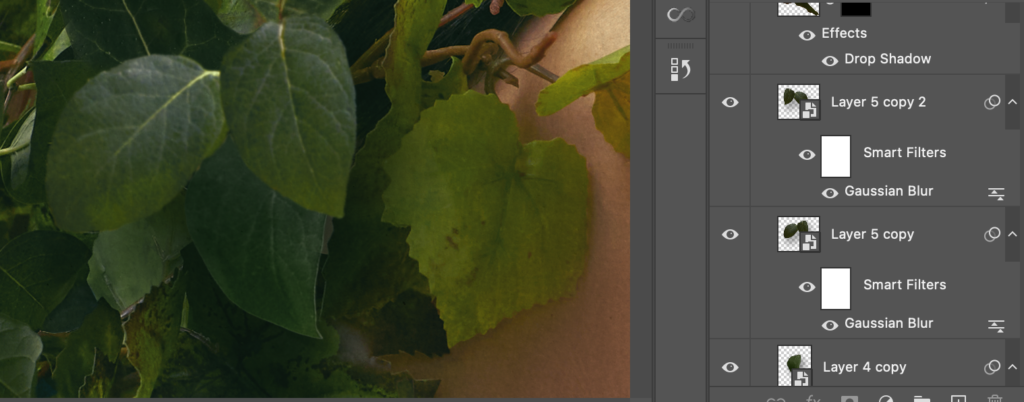
After the leaves were introduced, I went about adding flowers. I first tried using flowers from the limited external resources I had access to, but the shapes, colors, and patterns of the flowers in those catalogs seemed distracting and disruptive to this image. So I used flowers from other shots in this dryad sequence, enlarging, reducing, warping, and tweaking their color values. I tried using various colors at first but kept returning to reds, yellows, and oranges to build upon the color harmony already present in the image. Adding purples drew the eye away from the point of focus, so I got rid of them. Several flowers I painstakingly added were digitally scrapped, as they either added too much to the picture or not enough. The end result was a twisting pattern of flowers that wound their way around the dryad but left space enough to separate the elements of the composition and allow the warm flesh tones of the subject to shine without distracting from them. With as much excessive compositing as there seemed to be, I managed to exercise some restraint as well, resisting the compulsion to color the subject’s eyes yellow, which again would have been too much.
Here’s a before/after comparison of the initial image and the final one.
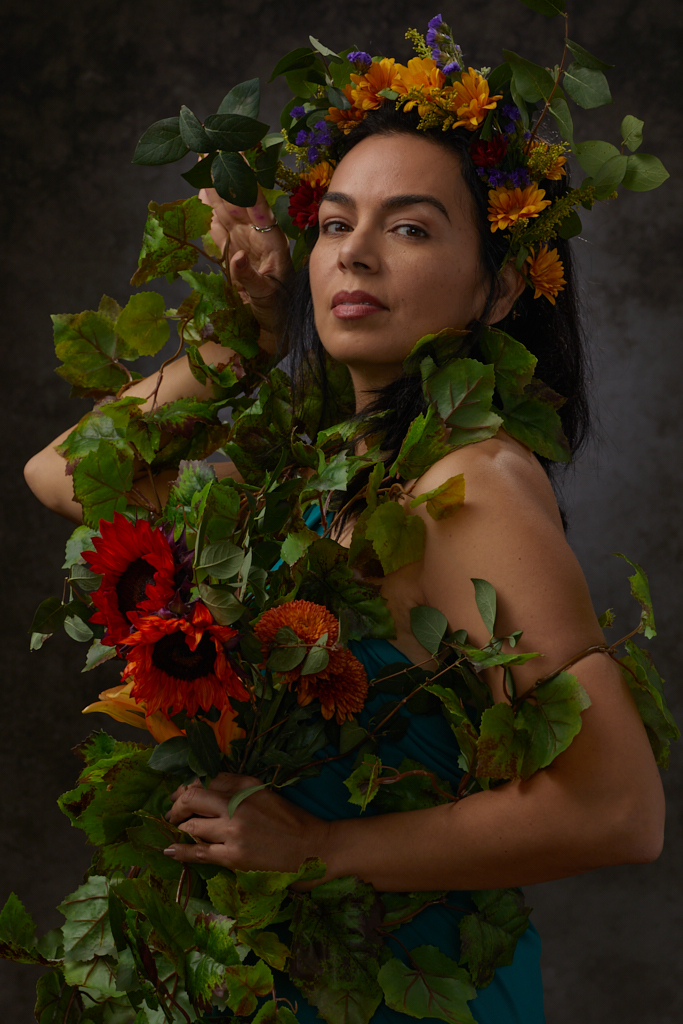
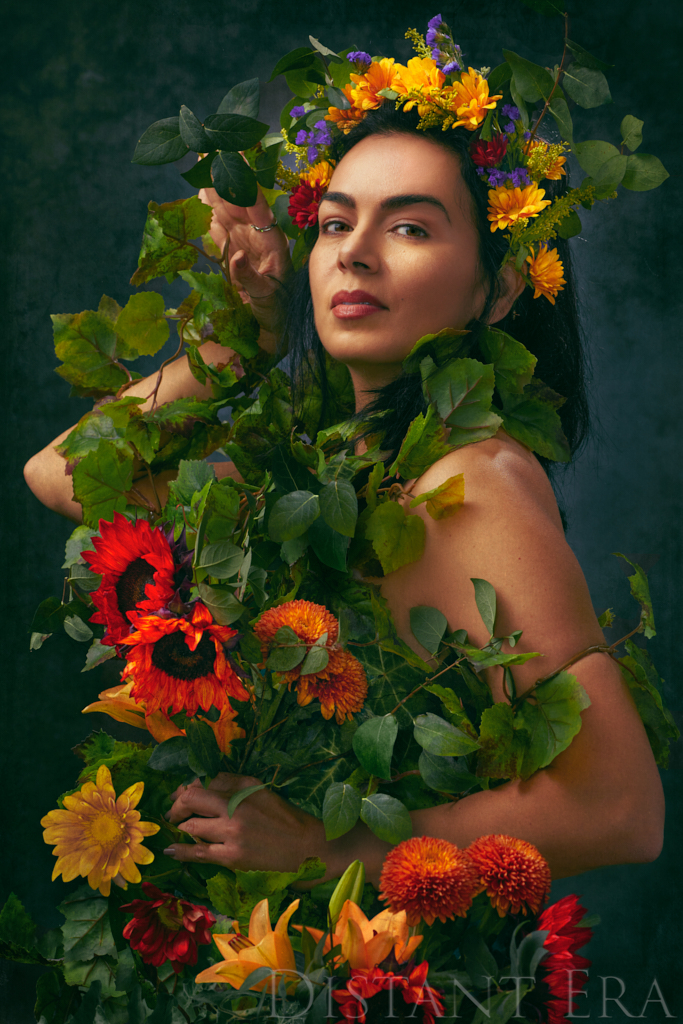
As usual, Elizabeth MacDougald was a consummate assistant in the session, helping to set up and take down, hold lights and reflectors, keep everyone fed with delicious fresh fruit, and document this behind-the-scenes moment with me, Lupe, and our production manager Garrus the Cat.
Story Inspirations, Observations, and Anecdotes on Dryads
Dryads have been an inspiration ever since I first photographed the fantastikals—quiet, graceful fairy character performers—at the Bristol Renaissance Faire in 2008. The following year, on my first Dungeons & Dragons writing assignment, Monster Manual III, design manager Mike Mearls tasked me with coming up with an alternate creature design for the dryad. I had imagined the Bristol fantastikals as creatures explicitly based on the seasons (they had a summer fairy, spring fairy, etc.) and wrote a sort of fairy tale entry for the creature guided by that inspiration. As part of the art order, I submitted some of the photographs I had taken of the Bristol fantastikals. Before the book was published they were re-termed nymphs, which is somewhat the same thing in classical mythology—and perhaps closer to what Lupe portrays in this image, since I decided against featuring a tree in the final composition. An amazing artist, Howard Lyon, illustrated those nymphs beautifully in the picture to the right. Note the crown of flowers in the illustration of the spring nymph; note the clothing made of leaves; note the flowers winding their way around her body.
This is all simply to say that creating an image of a dryad in this tradition is very much like coming home, returning to my first days of shooting with a digital camera and the subject matter that inspired me then and continues to inspire me now.
I am extremely grateful to my friend Lupe for bringing this lovely creature to life and for the beautiful flower crown and costume she constructed for this portrait.
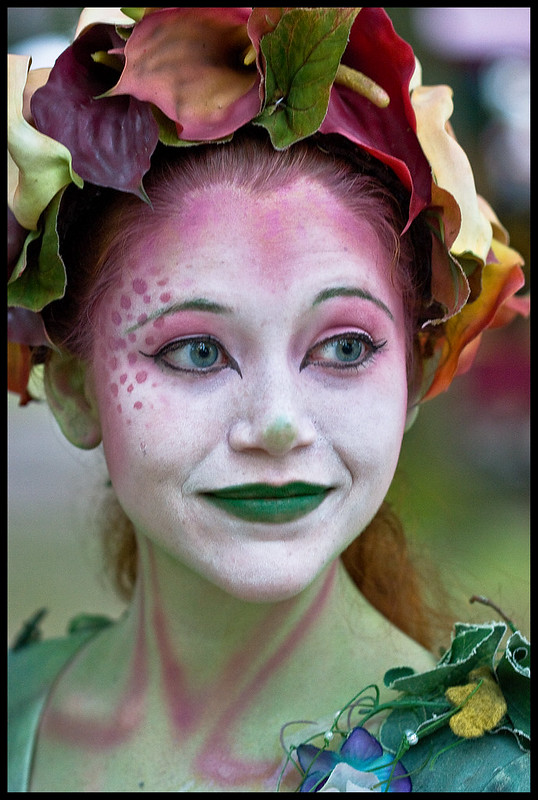
Tegan Elliott as the spring fantastikal. 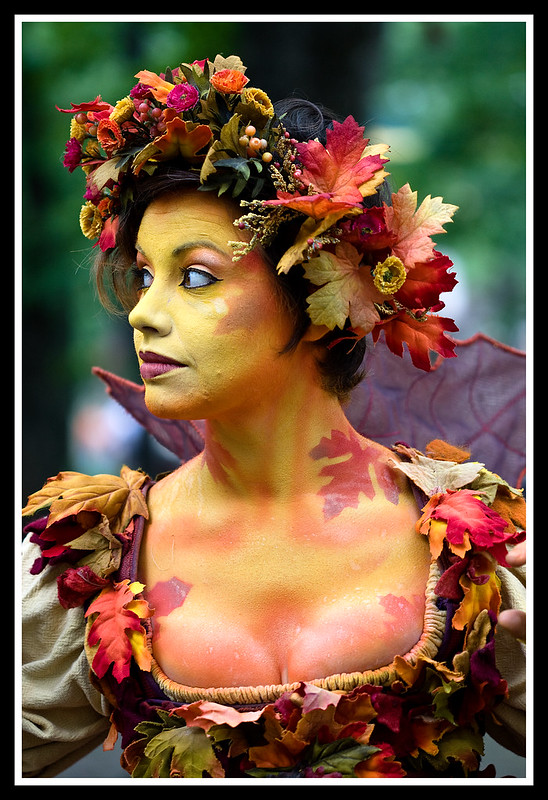
Genesse Spridco as the autumn fantastikal. 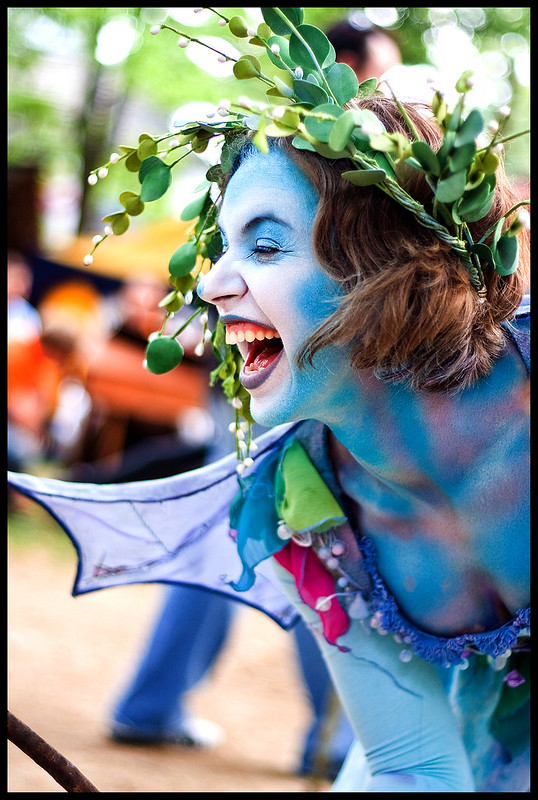
Amanda Ellis as the bubble fantastikal.
Next week in The People of Light and Shadow series…
We journey to West Africa to learn about a tiny, kindly fey called the Aziza fairy with actor Arielle Leverett.

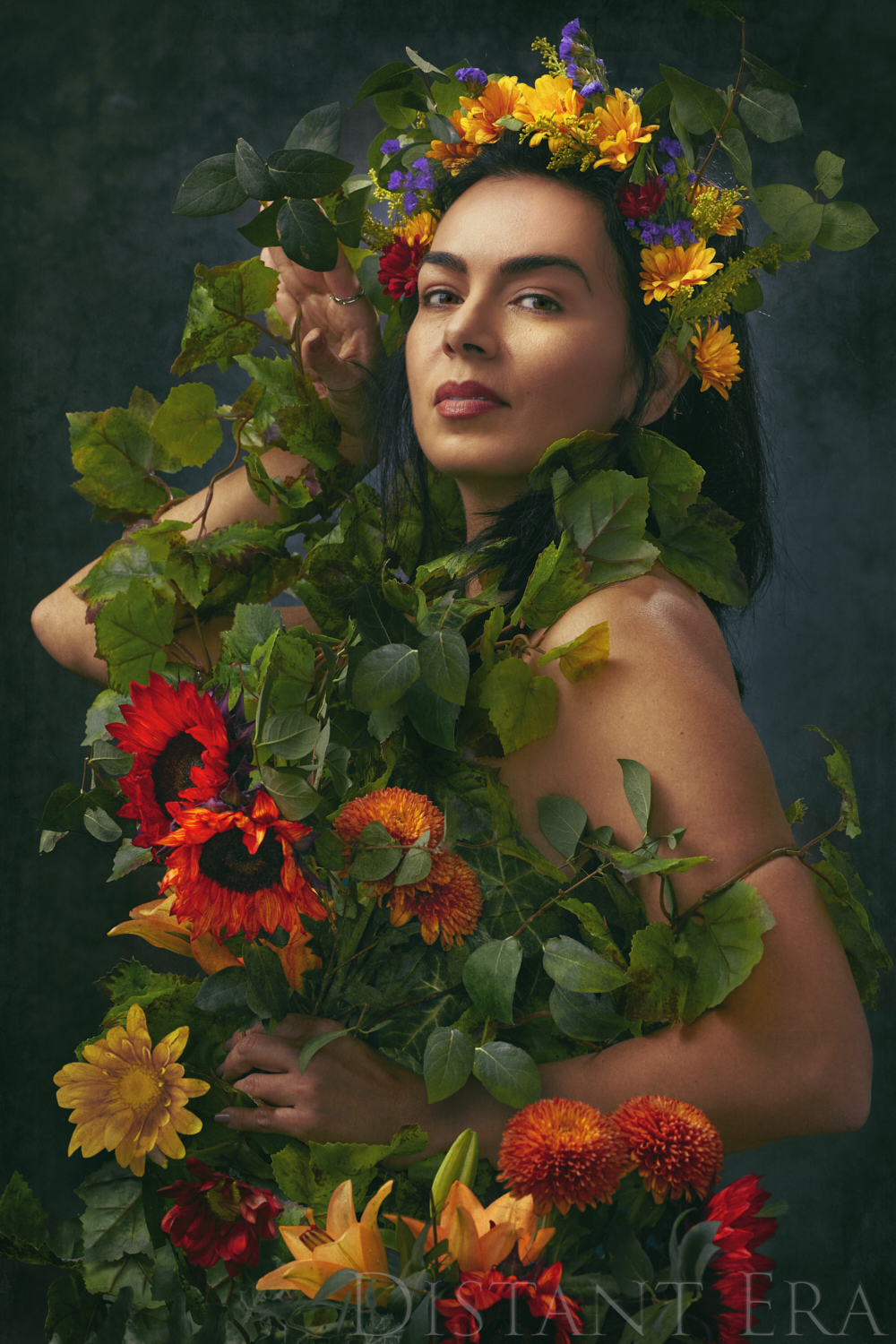
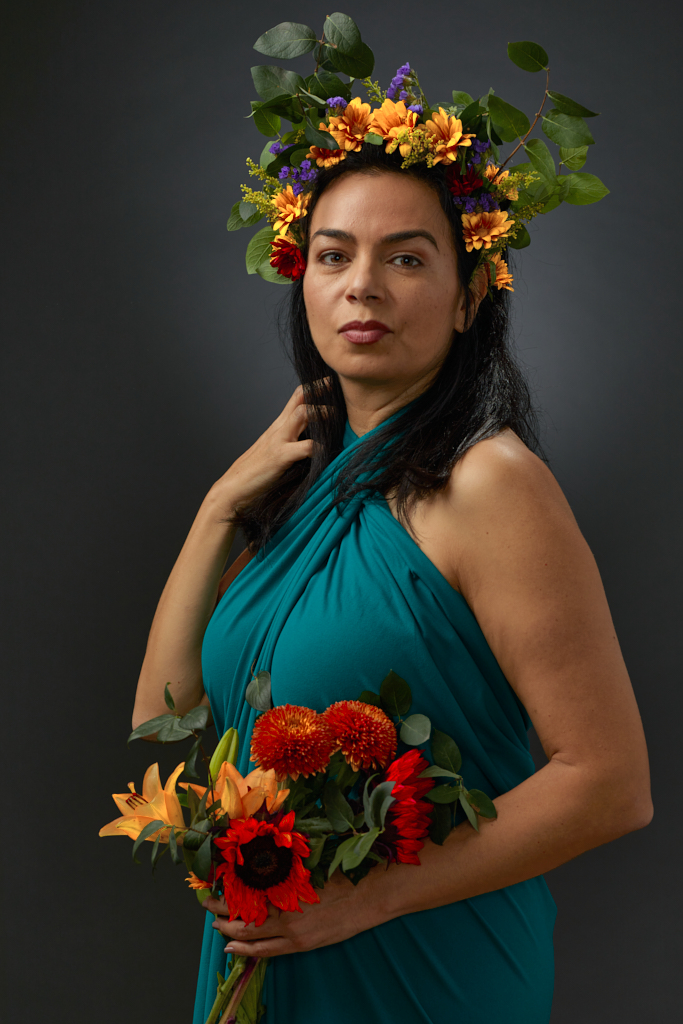
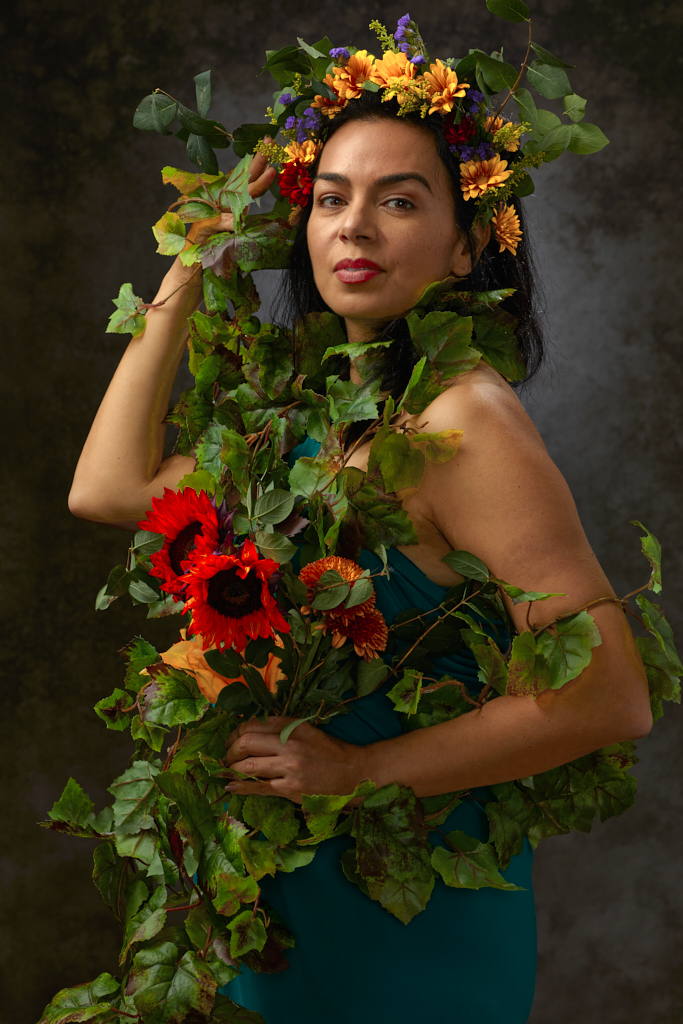
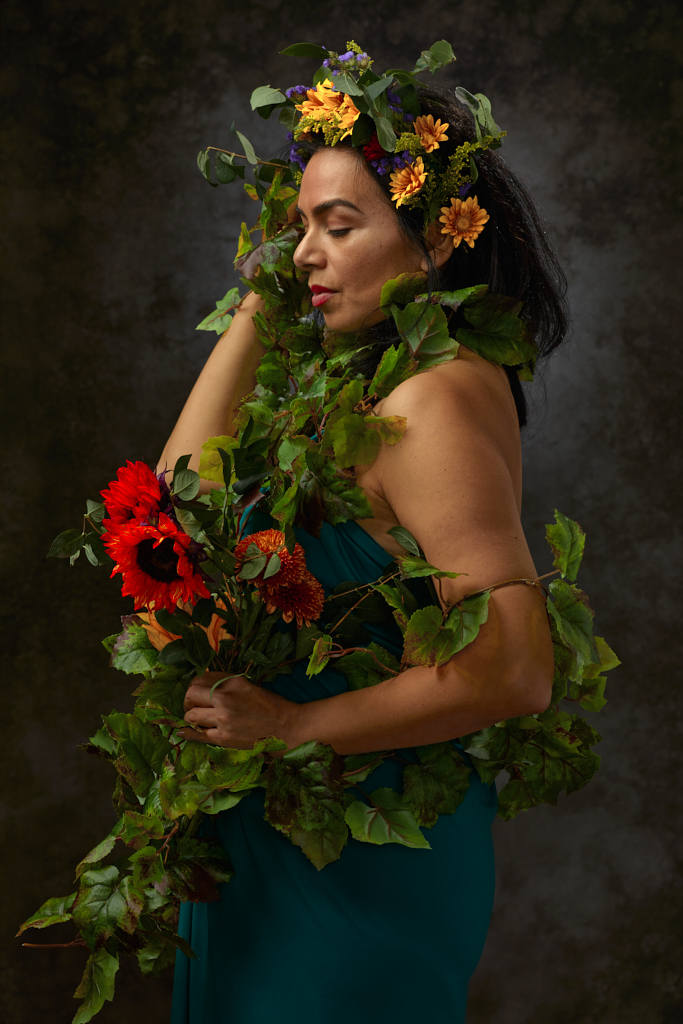
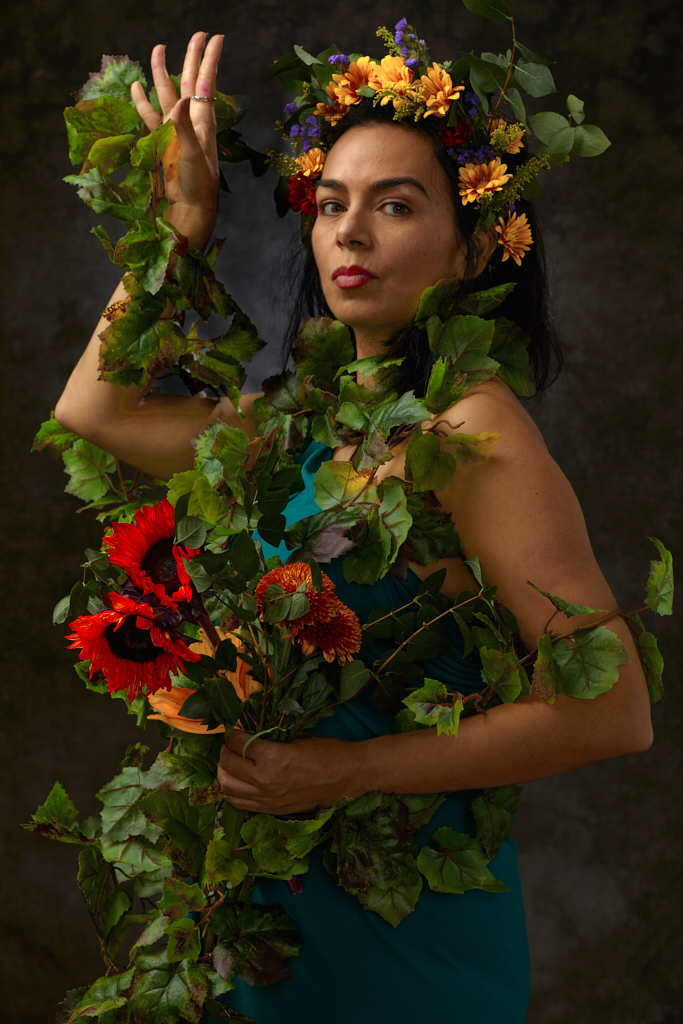
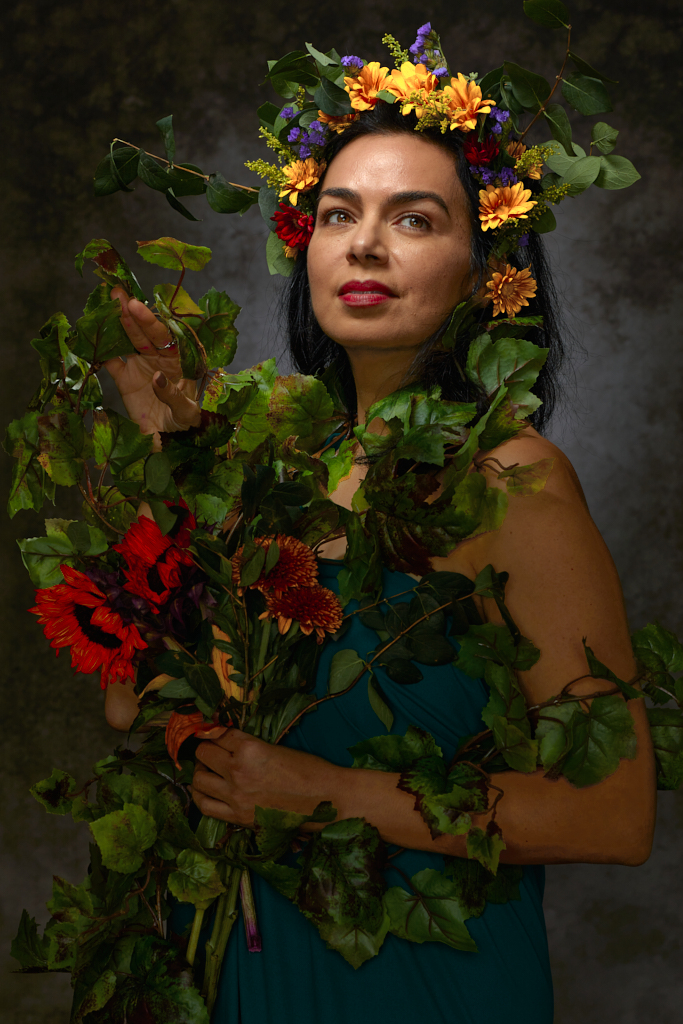
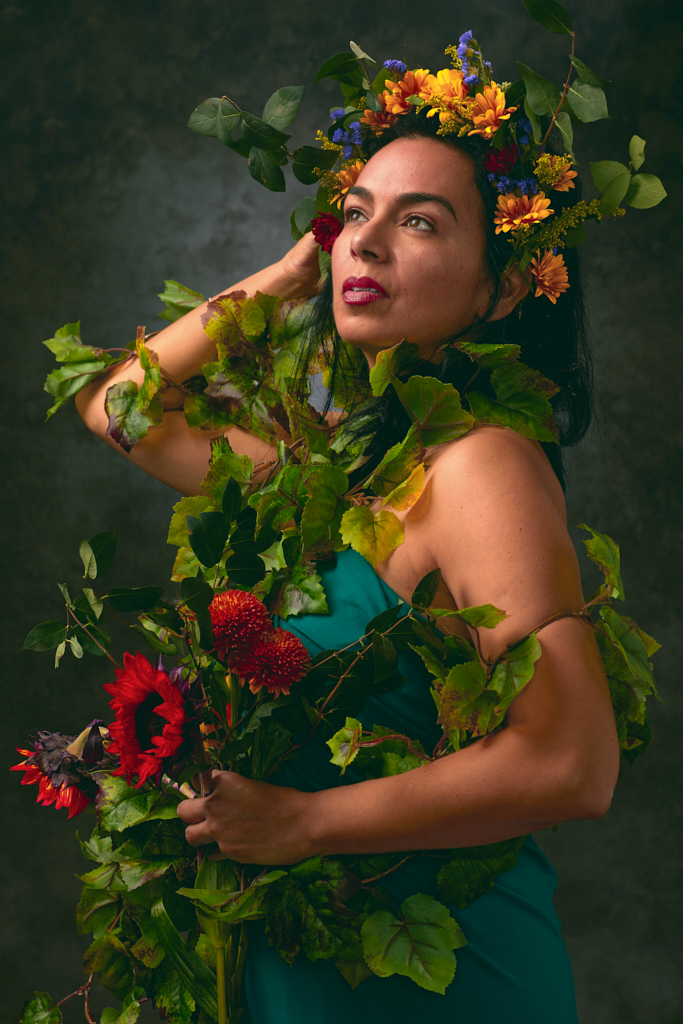
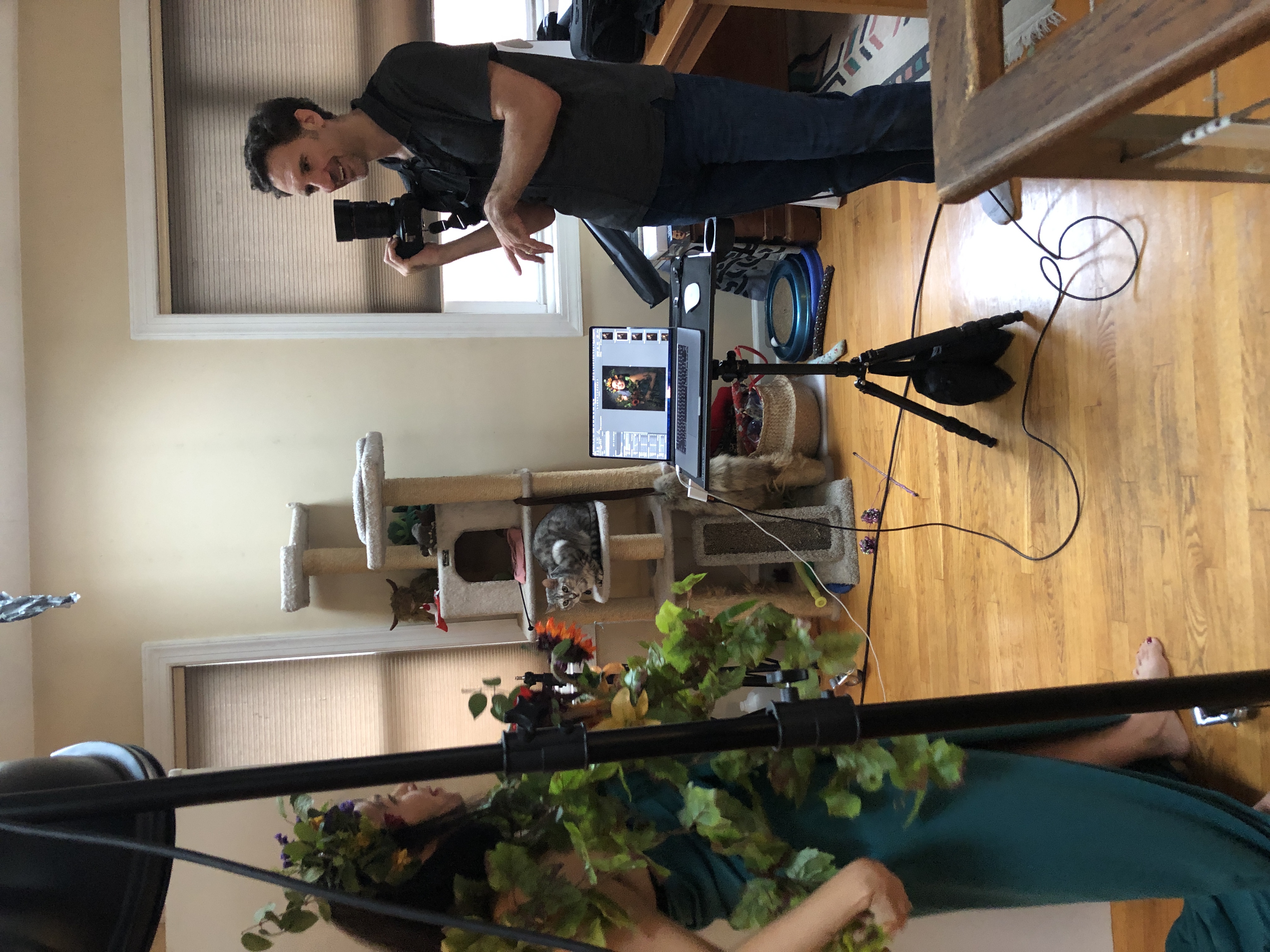
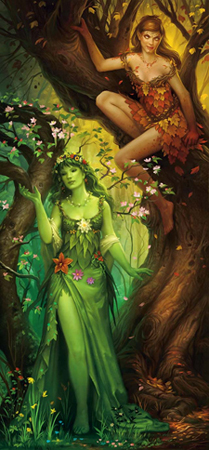
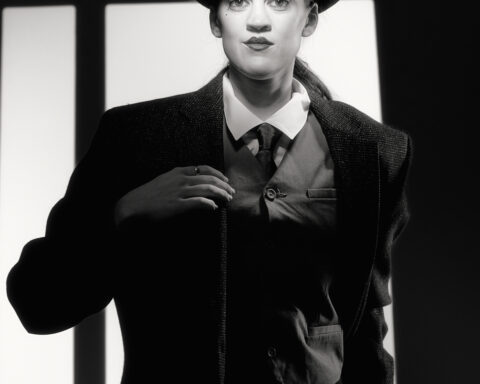
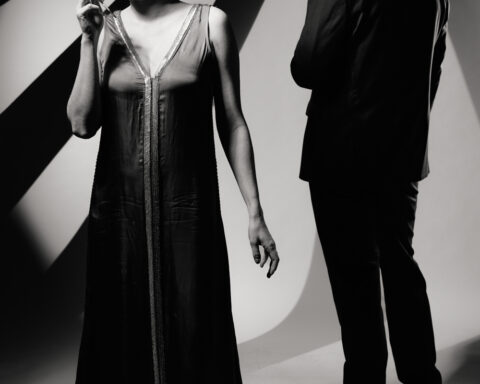
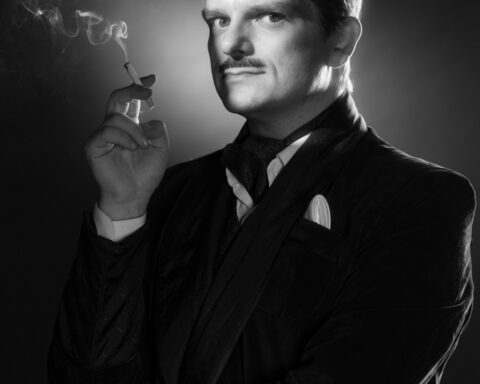
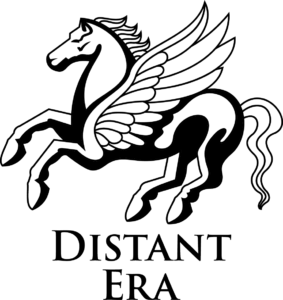
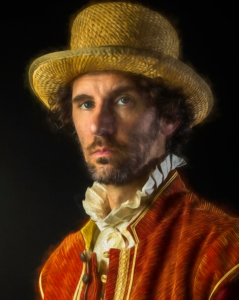
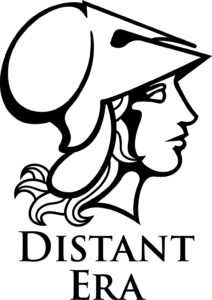
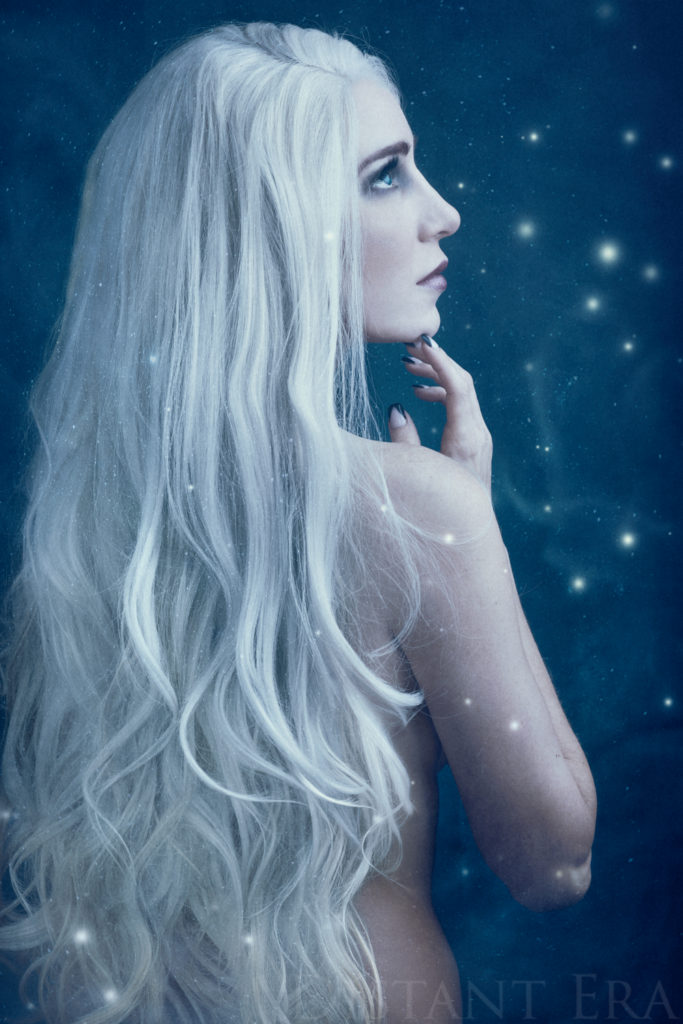
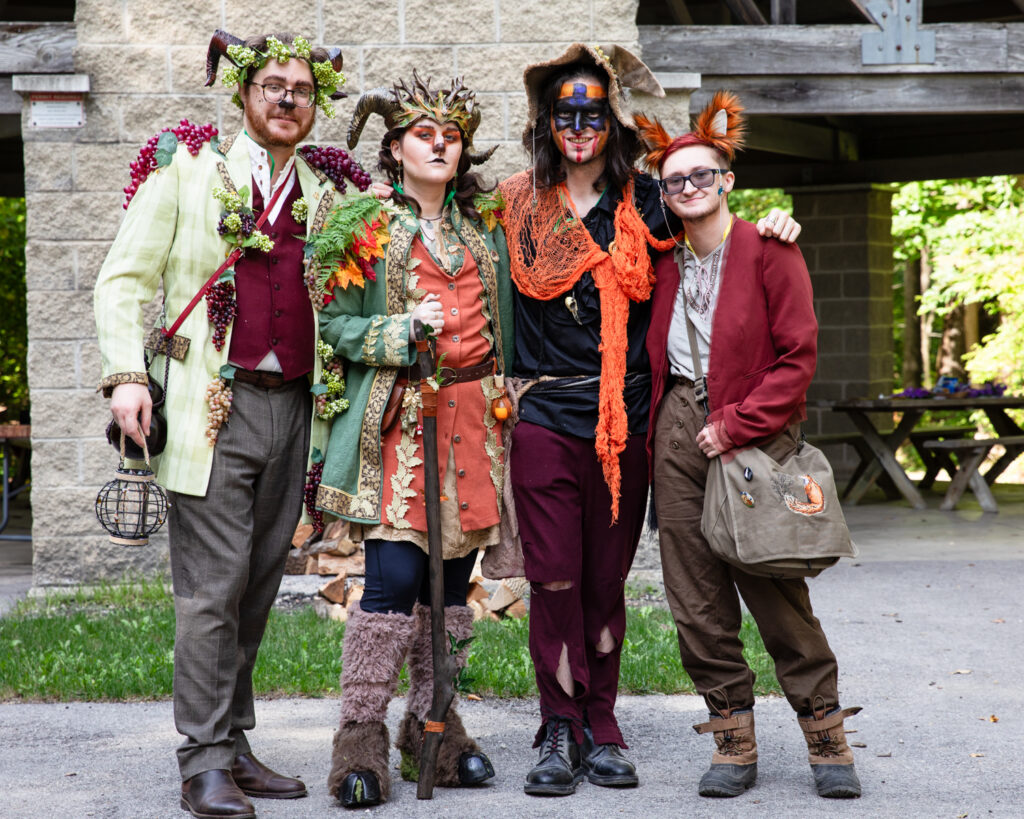
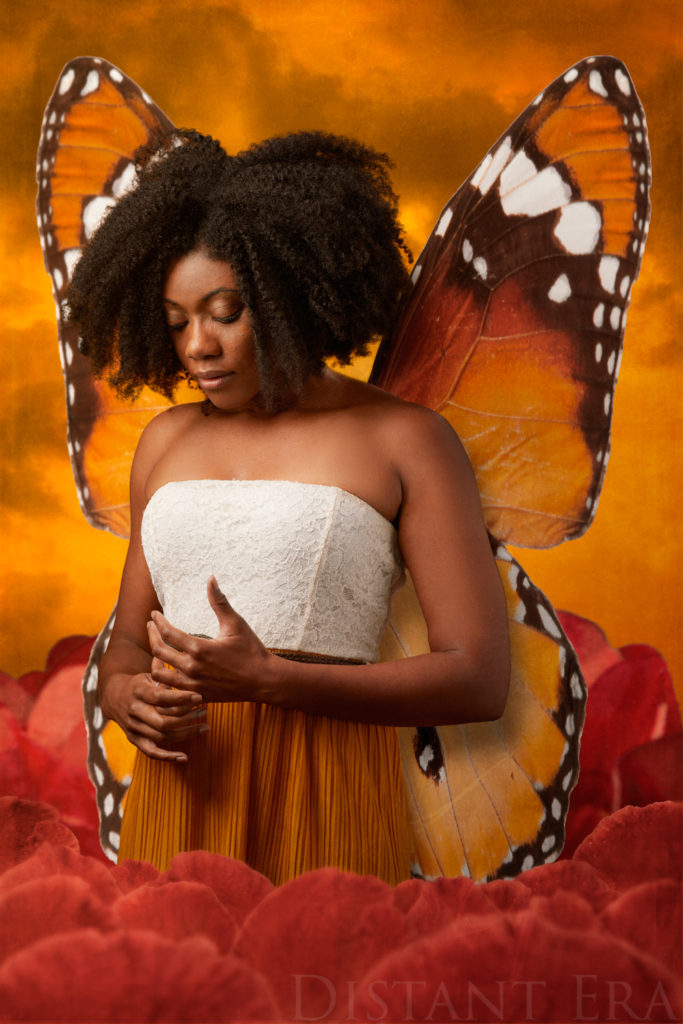
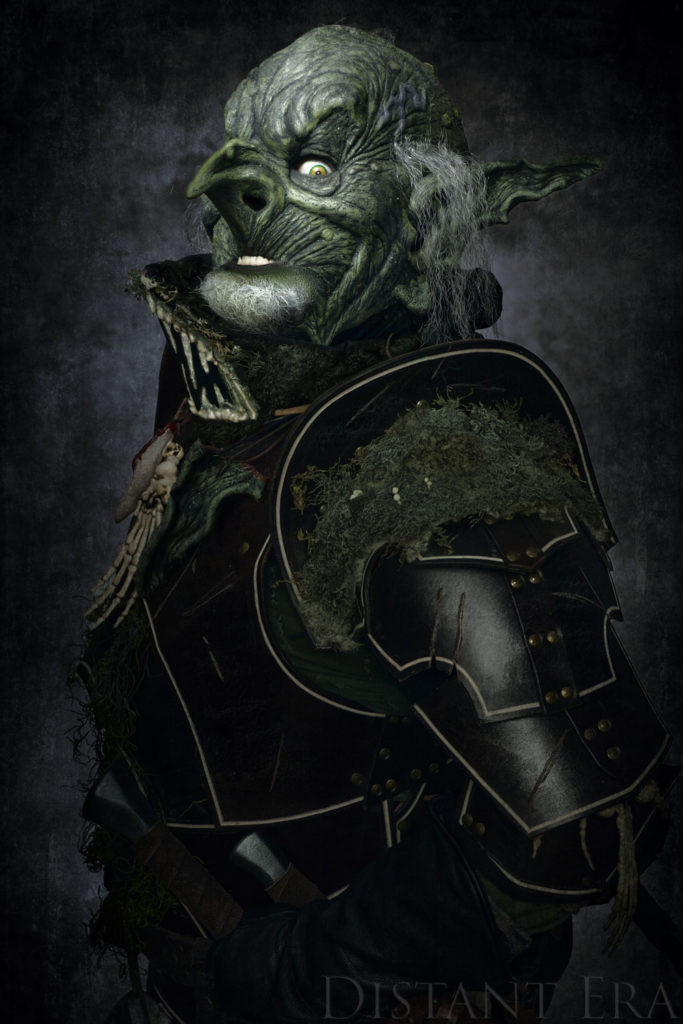

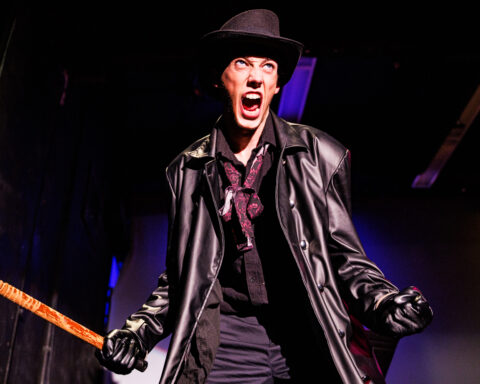
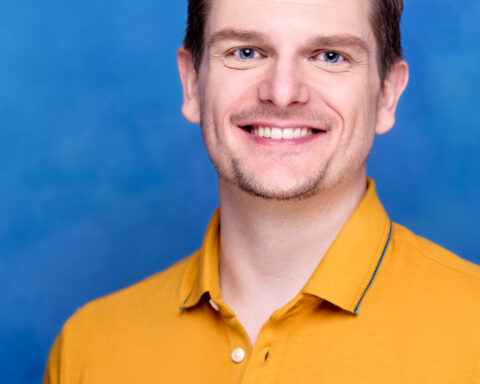
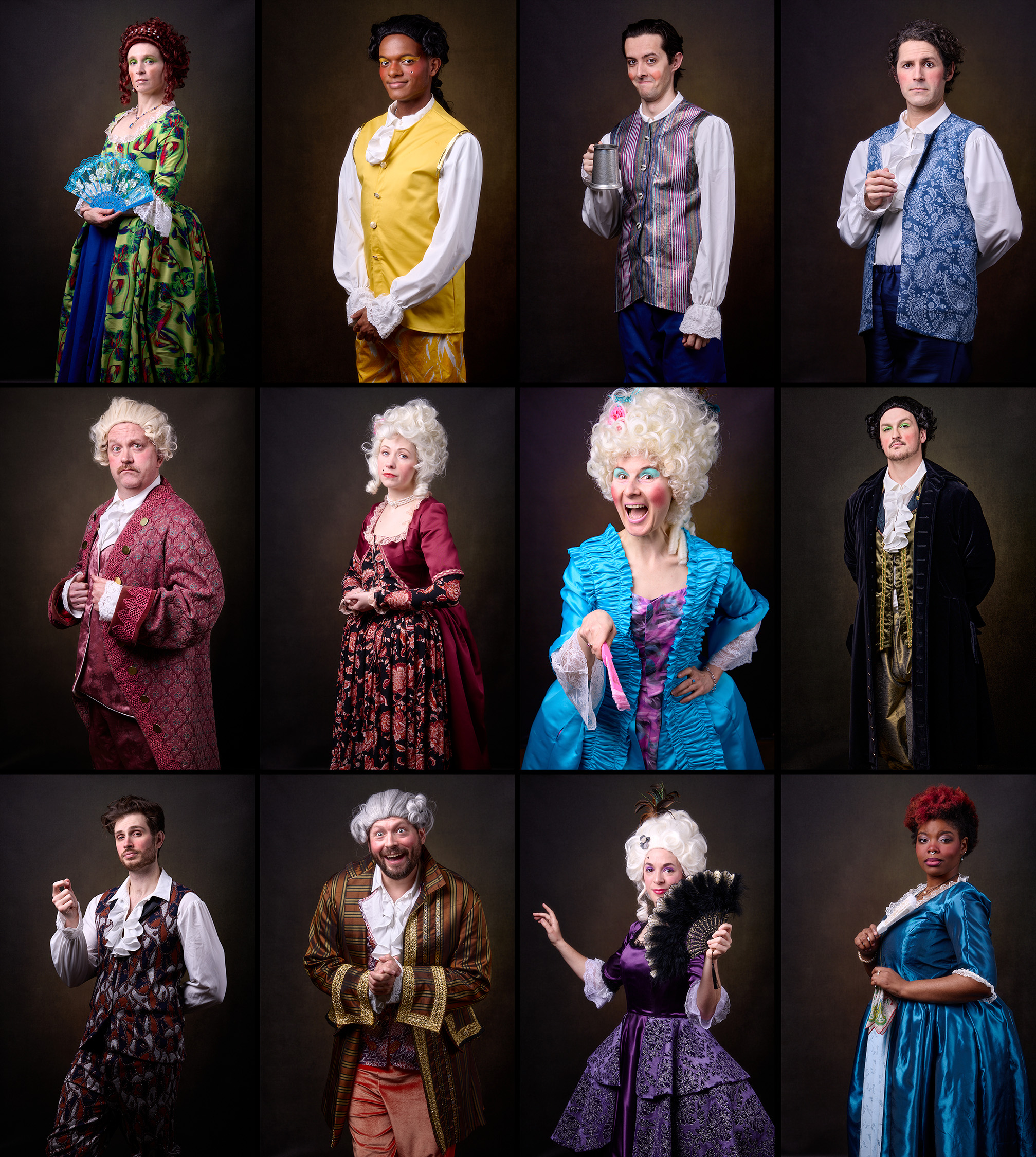
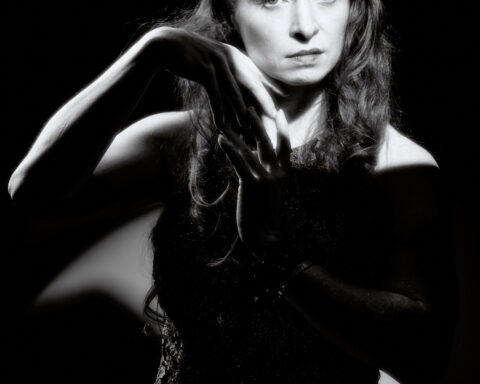
[…] shot the plain tiger butterfly the day before Lupe Ramirez came over for “The Dryad” session. I photographed the butterfly with my old 100 mm macro lens in a light box I had […]
[…] For example, we began the series with a very cool image of Gary Henderson in “The Changeling.” In the second image, “The Hunted Princess,” Liz Falstreau faces the same direction as Gary; she’s holding an apple where he was holding a butterfly; they are cropped somewhat similarly. A pattern begins to emerge. Part of the Reason Shellie DiSalvo’s “The Morrigan” image took a long time to edit was because it needed to belong in the same world as the previous two, and I wasn’t sure quite what that meant yet—it was a different shot from farther back. And so on. Every time I’m close to finishing an image, I place it next to others in the series to see how it fits and if there’s anything that needs to change. Here’s a video of me doing that with subtle variations of Lupe Ramirez’s “The Dryad.” […]